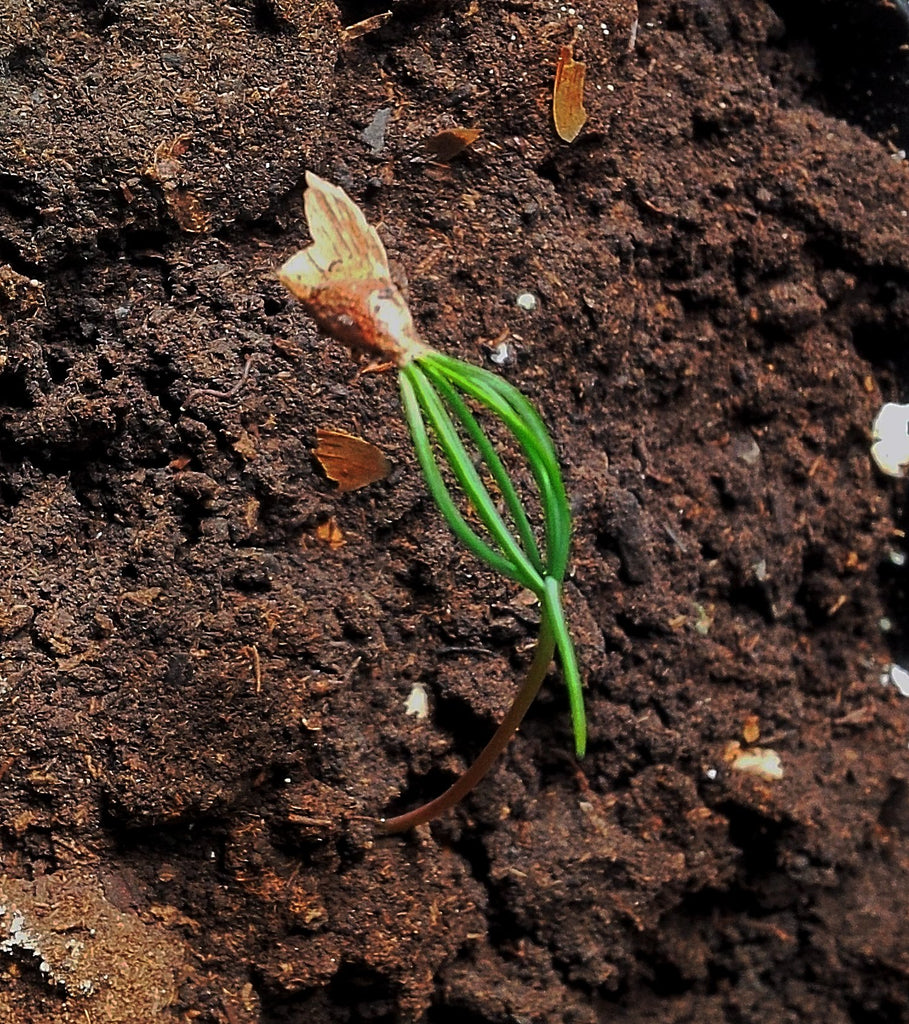
The identified influential factors and specific differences in seedling growth and mortality during the establishment phase provide critical information and guidance to the increasingly important reforestation practice of planting, and the overall analytical framework presented in this analysis is generally applicable to species beyond Douglas-fir and western larch. The developed seedling models readily fit into the architecture of current individual tree growth and yield models, which extend these models' ability to forecast seedlings during and after establishment.

Improved western larch seedlings from seed orchards had higher growth rates with small increases in mortality compared to wild collected sources, but improved Douglas-fir had minimal gains in growth and much higher mortality. The effects of root growth potential and competing vegetation were generally insignificant as pre-planting chemical preparation was applied to all sites. For both species, seedling mortality was greatest in. In most container and bareroot nurseries, Fusarium is ubiquitous in nursery soils, on seeds of several conifer. Weather conditions, especially measures of temperature and precipitation, had a similarly important role on seedling growth and mortality. By species, 18 of the 45 Douglas-fir seedlings died (40), and 14 of the 45 redwood seedlings died (31). Fusarium and Pythium species are the most common. Our results indicate that growth and mortality of seedlings were strongly influenced by their initial diameter and height such that slimmer and taller seedlings had higher mortality, while diameter and height growth was positively related to initial diameter and height, respectively. glauca Franco) and western larch ( Larix occidentalis Nutt.) seedlings across multiple contrasting sites in northern Idaho and eastern Oregon for the first two years.

The current study utilized annual measurements of 13,701 seedlings beginning immediately after planting to evaluate growth and mortality of planted interior Douglas-fir ( Pseudotsuga menziesii var.

This is likely due to the high variability and complexity of this type of analysis, as well as the general lack of available data. The multitude of both biotic and abiotic factors that influence growth and mortality of planted seedlings during the establishment phase is less examined. However, initial seedling growth and survival is a common missing link in forest growth and yield models as they are predominantly designed to project established trees often post canopy closure. Planting also requires significant investment to ensure successful seedling establishment. List of pests, diseases and tolerances: Stressed trees are susceptible to needle diseases and insect problems. It does not like hot, dry sites, and prefers a cooler climate. In response to wetter and generally longer growing seasons, however, coastal families have developed a less regulated pattern of shoot extension and rely more on free growth.Planting for reforestation is increasingly important for the establishment of forests for future timber production and enhanced carbon sequestration. Douglas-fir grows best in moist, neutral to acidic soil in full sun. We conclude that inland families have adapted to dry summers and short growing seasons by relying predominantly on predetermined growth for seedling height increment after the first growing season. During the second growing season, the intermittent drought treatment did not promote intermittent shoot growth, although inland and coastal families had different patterns of shoot growth that reflected adaptations to soil water availability.

In the first growing season, the results supported the hypothesis: the frequency of a second flush was genetically controlled (although weakly, h(f) (2) from open-pollinated families (160 total) from two inland (dry) and two coastal (wet) sources were grown under either well-watered or intermittent drought conditions (temporary drought followed by rewatering) for two growing seasons. We tested the hypothesis that intermittent (lammas) shoot growth in Douglas-fir (Pseudotsuga menziesii var menziesii (Mirb.) Franco) seedlings from dry regions of southwest Oregon is adaptively significant.


 0 kommentar(er)
0 kommentar(er)
